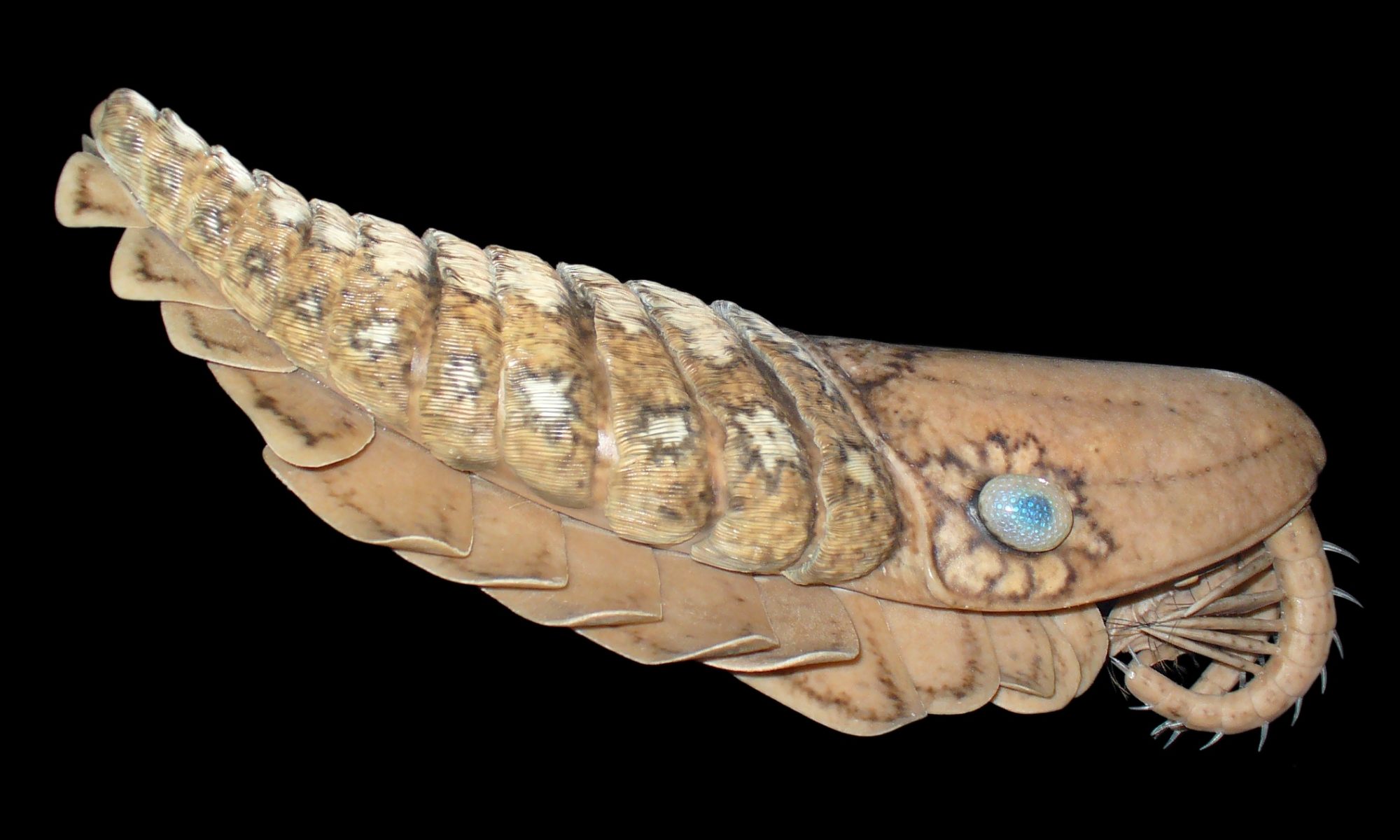Featuring image: Life on during the Ordovician period looked very different then today. Animals like anomalocarididaes were very common, but many species vanished at the end of the Ordovician. A new study sheds light on the first mass extinction event. Model created by Espen Horn, photo: H. Zell, Creative Commons (CC BY-SA 3.0).
Authors: N. P. Kozik, B. C. Gill, J. D. Owens, T. W. Lyons and S. A. Young
As mountains rise and continents fall apart, it not only changes the face of the Earth, but also drastically affects its inhabitants.
Earth’s biosphere was disrupted by several mass extinction events, often connected to great changes in large geologic cycles. These times of great disasters were also a chance for pioneers and led to great evolutionary leaps. A new study suggests that the oldest of the known major mass extinctions during the Ordovician was caused by a change in climate and the ocean’s circulation system.
The Ordovician (485.4 Myrs to 443.8 Myrs before present) marks the second Paleozoic period. In the late Ordovician period (~445 Myrs ago), geologists identified the oldest and second largest known mass extinction event where 85% of marine species vanished. Keep in mind that most of the species at that time lived in the oceans as life just started to colonise the surface of Earth. The extinction seems to be connected with a shift of oxygen-rich zones in the ocean, caused by changing sea-levels. These zones are important for life as many organisms cannot survive in water with low oxygen. By looking carefully at the rock record, the Ordovician extinction turned out to consist of two closely timed extinction pulses. Kozik and co-workers started to look at sediments from that period to better understand the connection between the two pulses of the mass extinction event.
A change in redox conditions in the oceans imply a change in the amount of free oxygen, which further affects a lot of different processes. First, with no or low amounts of free oxygen (anoxic in geological terms), many organisms cannot survive and die. If the conditions get even more reducing, sulphate in the water column is reduced to sulphide, which is toxic for many organisms. The environment turns euxinic. However, after looking at the sulphur and iodine chemistry in Ordovician sediments from Nevada, Estonia and Quebec, Kozik and co-workers suggest that anoxic and euxinic conditions are not always connected.
Sulphur and iodine have a different sensibility to redox changes. When condition turn from oxic to anoxic, iodate (IO3–) is reduced to iodide (I–), but only iodate is incorporated into carbon sediments. Therefore, the concentration of iodine can be used to trace anoxic conditions. Sulphur is less sensible. Only under very strong reducing conditions, sulphate turns to sulphide, which enhances the crystallisation of pyrites in sediments. Having these two elements, one can distinguish if sediments were buried under oxic, anoxic or euxinic conditions. Kozik and his group were able to show, that the first pulse of the Ordovician mass extinction event fell together with a time of an increase of anoxic condition, but a decrease of euxinic conditions, while the second pulse was maybe caused by an expansion of euxinic ocean regions.

How can anoxic and euxinic conditions vary so differently? Together with other climate proxies, the geologist developed a climate model for the Ordovician oceans. The cooler climate during the first extinction pulse led to falling sea levels due to glaciation. While this destroyed wide shallow water areas with oxic conditions, it also increased the exchange between surface water and the deep ocean. This helped to transport small amounts of oxygen to the depth and prevented the reduction of sulphate. After this first, cold period, it became warmer again. In warmer oceans, the transport of surface water into the deep ocean is slower and the ocean circulation system decreases. Thus, large portions of the ocean started to turn euxinic, causing the second pulse of the Ordovician mass extinction.
By looking back into the Earth’s history, we can learn important lessons for our future. The evolution and fate of ecosystems depends crucial on the global climate. Changing the temperature can lead to massive disturbances of the oceans and threatens the survival of its inhabitants. Our global economy raised the temperature of the Earth already by more than 1°C. The consequences for our oceans will be devastating, like the coral bleaching of the Great Barrier Reef shows. For how much destruction do we, as a species, want to be responsible for? It is time to act.
License:
‘The first mass extinction’ by Max Winkler is licensed under a Creative Commons Attribution-ShareAlik

